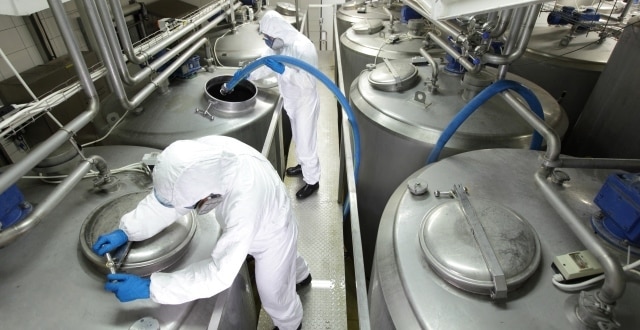It goes without saying that hygiene is of paramount importance in any food processing operation. The consequences of poor hygiene at any stage in the paddock to plate journey of foodstuffs can be catastrophic. But, fortunately, the global acceptance of the necessity for the highest hygiene standards in food production is spurring technological advances that make the task of maintaining those standards less onerous.
The key to maintaining hygiene throughout the processing chain is to have the proper procedures in place. And that means GMP – or good manufacturing practices.
Good manufacturing practices cover many basic operational conditions and procedures that span the whole manufacturing operation from the building itself to the equipment used, cleaning regimes, pest control and avoidance of foreign matter in the finished product.
Within these criteria, there have been a number of recent developments.
Pest Control
For example, HACCP Australia has just released a new standard based on international best practice for pest control operations in the food manufacturing industry. This is the world’s first such standard that applies to both manufacturers and to pest management service providers, and is likely to be adopted in numerous other countries. Browse through the exhibitors with pest control technologies at foodpro.
Santising Manufacturing Equipment
When it comes to manufacturing equipment, the hygiene requirements of the food processing industry place special emphasis on both the design and the materials used in such equipment.
The necessity for equipment to be sanitised using various combinations of chemicals, pressurised water and high temperatures limits the choice of the materials that can be used and also places tight tolerances on the construction of equipment. For example, all sensitive electronics need to be sealed away from the “wet” side of the design, and there can be no nooks and crannies in which bacteria can “hide” from the washdown.
Stainless Steel Welding
Stainless steel has always been the material of choice for food processing equipment thanks to its strength, coupled with properties of chemical resistance that mean it will not react with food products and can be cleaned at both high temperatures and with aggressive cleaning agents.
However, welding of stainless steel is not a trivial operation, and special emphasis must be placed on the finishing of any weld, to the extent of grinding and polishing to ensure an even result.
Recent advances in materials technology have led to the development of a number of different food-grade plastics that share the beneficial attributes of stainless steel with the added advantages of light weight and flexibility.
These new materials have allowed machine builders to move further into the food processing chain with complete systems that can tolerate industry standard washdown procedures, from flexible conveyors to robotic actuators that are delicate enough to handle fragile goods such as eggs.
And at the end of the line, ever more sophisticated sensors are available to detect contamination before it reaches the consumer. These range from inline metal detectors that can both detect and remove metal contaminants from product streams to ever more sophisticated X-ray and vision systems capable of screening output at production line speeds, even after it has been packaged.
About the author: Laurence Marchini
Laurence Marchini began his career as a technology journalist with the Institution of Electrical Engineers in 1980. He is now Editor of Industry Update, Australia’s leading manufacturing magazine and website.
Looking for solutions and options to keep your operation to the highest hygiene standards?
Browse through the product directory and see what will be on display at foodpro 2017.

